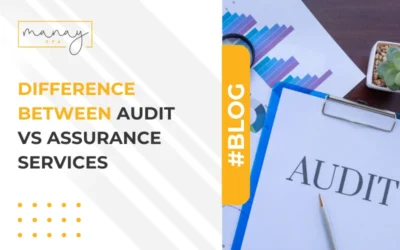The One Big Beautiful Bill Act: The Ultimate 2025–2026 U.S. Tax Reform Guide

Introduction
On July 4, 2025, the U.S. government passed one of the most significant tax overhauls in more than a decade. Nicknamed the OBBBA “One Big Beautiful Bill Act,” this comprehensive reform rewrites over 50 sections of the federal tax code. With sweeping changes that affect individuals, families, business owners, freelancers, investors, and corporations, the time to act is now.
In this Ultimate Guide, we’ll break down what’s changing, who it impacts, and how you can proactively position yourself for financial success in 2025 and beyond.
Table of Contents
ToggleWhy This Reform Matters Now?
The Big Beautiful Bill Act is not just another adjustment to tax brackets. It’s a foundational restructuring of how income is taxed, how deductions are calculated, and who benefits the most from the system.
Some changes kick in immediately. Others roll out over 2026. But almost every taxpayer from working parents to multinational corporations will feel the impact.
Key Changes for Individuals
The One Big Beautiful Bill Act introduces new tax relief and tighter eligibility rules for individuals and families. While some adjustments bring more money back into your pocket, others require careful planning to avoid missing out.
Tax Brackets & Rates
The federal income tax structure stays largely unchanged, providing predictability for taxpayers.
- The top marginal rate remains at 37%.
- Brackets are frozen at 2017 levels to prevent bracket creep.
- No changes to the standard deduction or personal exemption repeal.
- New non-itemizer charitable deduction of $1,000 ($2,000 for joint filers)
Child Tax Credit
Families with children will see enhanced support, but with a catch.
- Increased to $2,200 per child; $1,700 is refundable.
- Starting in 2026, children must have valid Social Security Numbers (SSN).
- Families with dependents previously eligible may now need to reevaluate.
SALT Deduction & Mortgage Interest
Homeowners and residents of high-tax states gain significant relief.
- SALT limitation raised from $10,000 to $40,000 in 2025. This benefit phases out for higher-income individuals and returns to $10,000 by 2030.
- Mortgage interest deduction preserved up to $750,000 of principal.
- Home Equity Line of Credit (HELOC) interest deductible if used for home upgrades.
Senior Tax Deduction
Retirees get extra breathing room with a larger deduction.
- An additional $6,000 standard deduction for qualifying seniors.
- Income thresholds apply for eligibility.
- Helps lower taxable income for older Americans.
- Need SSN
Tips & Overtime Income Relief
Lower-income earners benefit from targeted exclusions.
- Up to $25,000 per taxpayer in tip income excluded for eligible individuals.
- Partial overtime wage exclusion also available up to $12,500 ($25,000 for marrried filing jointly)
- Designed to ease burdens on hourly and service workers.
- Income phaseouts!
Vehicle Loan Interest Deduction for U.S.-Made Cars (2025–2028)
For eligible U.S.-manufactured vehicles weighing up to 6,350 kg (approximately 14,000 lbs), taxpayers can deduct up to $10,000 in annual loan interest payments between 2025 and 2028 whether they itemize or not.
However:
- This deduction phases out for individuals earning above $100,000/year (or $200,000 for married couples filing jointly).
- The vehicle must be purchased within the U.S. and meet federal manufacturing criteria.
- Intended to support domestic vehicle production and middle-income buyers.
Tax Deferred Saving: What’s Changing and What’s New
The 2025 reform introduces a brand-new tax-deferred investment tool for children — while also expanding the rules for existing accounts like 529 Plans and Roth IRAs.
New: Trump Accounts for Children
Aimed at building wealth from birth, “Trump Accounts” are tax-deferred investment accounts designed specifically for children who are U.S. citizens with valid Social Security Numbers (SSNs).
Key Highlights:
- Up to $5,000 per year in after-tax contributions (indexed for inflation).
- Contributions can come from parents, employers, relatives, tax-exempt entities, and even government agencies.
- Funds must be invested in a diversified index fund tracking U.S. equities.
- No distributions allowed until the child turns 18 (with few exceptions).
- No further contributions allowed after age 18
- Special rules apply to tax-exempt organizations (like private foundations) which may contribute beyond the $5,000 cap if doing so for a qualifying group (e.g., all children in a district).
- Pilot Program Bonus:
For children born between January 1, 2025, and December 31, 2028, the federal government will automatically deposit $1,000 into each eligible Trump Account. If no account is opened by the time a child is claimed on a tax return, the IRS will create one unless parents opt out.
Effective Date: Applies to tax years beginning after December 31, 2025.
Expanded: 529 Plan & Roth IRA Updates
In addition to Trump Accounts, the reform improves flexibility in traditional savings:
- 529 Plan Rollover to Roth IRA: Up to $35,000 lifetime cap, helping unused education savings become retirement savings.
- Contribution limits for Traditional and Roth IRAs increased by $500.
- Income thresholds for Roth IRAs are adjusted for inflation to include more earners.
Itemized Deductions
New Paths to Deduct More If You Qualify
While the standard deduction remains unchanged, itemized deductions have expanded.
• Charitable contribution limit remains at 60% of AGI for cash gifts.
• Medical expense deduction floor reduced to 5% of AGI (was 7.5%).
• State and local taxes (SALT) deduction cap raised to $40,000 in 2025, then phases down.
• Itemizing may benefit high earners and large families
Major Changes for Business Owners
If you’re a business owner, this is your moment. The new rules expand deductions, reinstate key tax tools, and even allow for retroactive benefits. But the clock is ticking.
100% Bonus Depreciation
A full return of one of the most powerful tax tools.
- Applies to equipment, tech, furniture, and certain vehicles.
- Entire cost can be deducted in the year of purchase.
- Provides instant boost to business cash flow.
- Short lived assets only!
Section 179 Expansions
Small businesses gain more flexibility for capital investments.
- Annual expense cap lifted to $2.5M.
- Includes tangible property, off-the-shelf software, and certain improvements.
R&D Expensing Restored
Domestic R&D becomes more tax efficient.
- Upfront deduction reinstated for U.S.-based R&D.
- Strong incentive for innovation and tech startups.
QBI & PTE Extensions
Tax efficiency tools get new life.
- Qualified Business Income (QBI) deduction extended beyond 2025. Mention that doesn’t really impact SSTBs
- Pass-through Entity (PTE) deductions preserved.
- Allows continued optimization for pass-through entities.
Small Business Stock Exclusion
Encouraging long-term investment in American innovation.
• 100% federal capital gains exclusion for Qualified Small Business Stock (QSBS)
• Applies to shares held for five or more years
• Incentivizes early-stage investment and startup growth
Additional QSBS Incentives Introduced in 2025 Reform
The One Big Beautiful Bill Act expands QSBS benefits:
• Tiered exclusions now apply for shares held 3 or 4 years, offering partial tax breaks before the 5-year mark
• Supports greater liquidity while fueling early investment
• Exact exemption percentages vary, based on compliance with Section 1202 thresholds
Freelancers, Contractors & 1099 Updates
Independent workers need to take note of new thresholds and responsibilities.
- Reporting threshold raised to $2,000 (from $600) for 1099-MISC/NEC.
- Impacts freelancers, gig workers, and contractors.
- Fewer forms may be filed, but risk of audits increases.
- Formalize contracts and track payments diligently.
Energy & EV Credits: What’s Phasing Out – Almost Everything
The window is closing for many green energy incentives.
- EV credits, solar incentives, and other green programs end after Sept 30, 2025.
- No transition period post-deadline.
- Households and businesses must act before Q3 2025 to qualify.
Estate & Gift Tax
The 2025 reform removes uncertainty around estate and gift taxation by solidifying a higher exemption threshold.
What’s Changing:
- Starting in 2026, the lifetime basic exclusion amount increases to $15 million per individual under IRC Section 2010(c)(3)(A).
- This new threshold will be indexed for inflation going forward, ensuring its value remains relevant over time (Section 2010(c)(3)(B)).
- The prior sunset clause (Section 2010(c)(3)(C)) is repealed, meaning there will be no automatic reversion to lower pre-2018 limits.
- This applies to estates of decedents and gifts made after December 31, 2025.
- Why It Matters:
High-net-worth individuals and families can continue legacy planning with clarity and confidence, leveraging historically generous exemptions without fear of rollback.
Operational Changes: IRS Going Digital
The IRS is entering the digital age.
- Starting Oct. 1, 2025, IRS communications and refunds go fully digital.
- No paper checks or notices will be issued.
- Taxpayers must create and verify online IRS accounts.
- Ensures faster processing and fewer errors.
Strategic Planning for 2025–2026
Smart planning today creates savings tomorrow.
- Forecast income and expenses.
- Consider advancing purchases to leverage depreciation discuss with our tax professional before applying.
- Confirm dependents’ SSNs for Child Tax Credit (CTC) eligibility.
- Consult with your tax professional at the best option for correcting previously amortized R&D expenses (Amend or writeoff over 1-2 years) Do NOT recommend this
- Work with a trusted CPA to align your tax strategy including potentially accelerating charitable giving to 2025 for itemizers (this is a freebie)
What You Should Do Now
Take proactive steps to secure your tax advantage.
- Schedule a session with Manay CPA
- Review all potential deductions and credits.
- Register and verify your digital IRS account.
- Start organizing records: tips, R&D, energy installs, dependents.
- Preparation now means peace of mind later.
Conclusion
The One Big Beautiful Bill Act changes everything. Whether you’re a parent, a small business owner, a high earner, or someone eyeing clean energy investments — your tax landscape is shifting.
Use this guide to adapt, plan, and save. Start now, and let 2026 be the year you are truly ready.
Ready to talk strategy? Book your session with Manay CPA.
Summarize the blog with Artificial Intelligence (AI):
Published on: 30 July 2025
Last updated on: 30 July 2025
Manay CPA is a reputable, full-service CPA firm based in Atlanta, Georgia. Founded in 2001, we provide comprehensive accounting and tax solutions to individuals and businesses across all 50 states.





